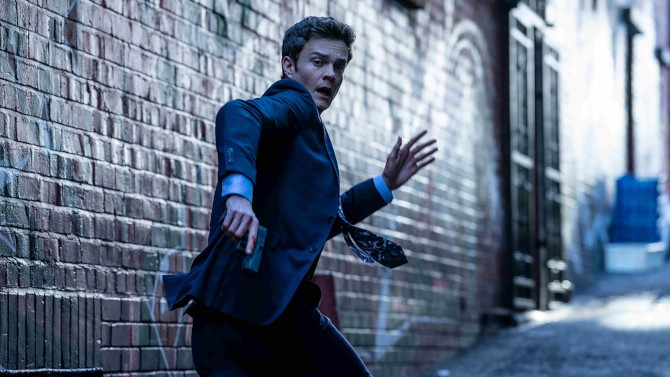
No Caine, No Gain
Following in the recent action craze launched by John Wick, fusing it with The World is Not Enough Bond villain’s inability to feel pain, adding in some of the sadism found in Home Alone and its sequel, and throwing in some rough and tumble comedy to boot, Novocaine (2025), co-directed by Dan Berk and Robert Olsen, holds no punches, or perhaps packs quite the punch if you’d prefer. Not for the weak of heart... an early warning to the wise – if you don’t like R rated violence then this movie is likely not for you, as it does not hold back in any which way. Though it does contain action, comedy, and romance, don’t let those last two genres suggest that this is a light date night foray for couples.
-
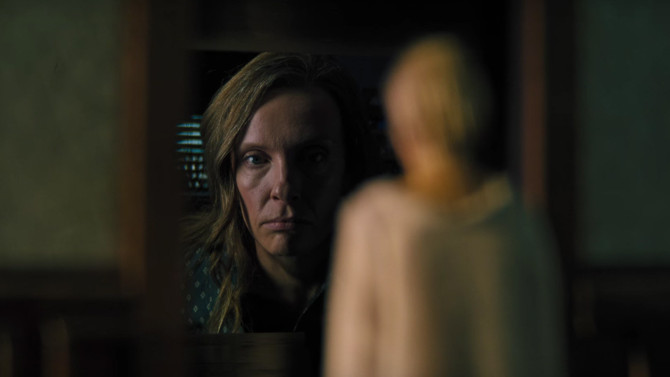
Bloodlines
HereditaryJune 10, 2018The obituary – the last call, the final farewell, the closing shindig (likely the only remaining time you’ll be the centre of attention), basically a public invite looking for a person’s friends and family to come together for one last time to say goodbye, to tell stories, and to find some solace in closing the book on a man or woman’s story. . . but is it truly the end? Opening with an obituary, first time filmmaker Ari Aster’s Hereditary transports us into a reeling family dynamic, a group that have about as much promise in their lineage as the Usher’s (the Edgar Allan Poe characters, not the hip hop/pop artist). With mental illness coursing through their blood, Annie Graham (Toni Collette) did not exactly have a great relationship with her mother – often estranged, the elderly lady, who lived with dissociative identity disorder, ended her days dealing with dementia, further adding to the enigma that was her highly private life.
-
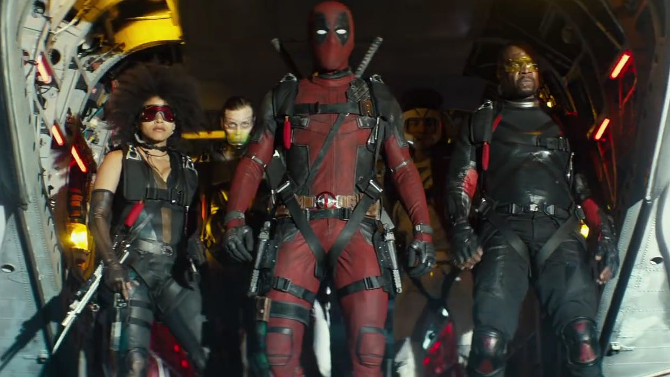
Dawn of the Deadpool
Deadpool 2May 20, 2018The anticipation was palpable. . . after a bunch of unique trailers (Superman phone booth spoof, deceased PBS artist Bob Ross riff, ‘oh shit, we forget to put the computer generated effects in’, and apologies to David Beckham), Deadpool has finally returned to theatres – one of the most anticipated R-rated sequels in quite some time. And, for the most part, it thrives. This time directed by stunt man turned action maestro David Leitch (John Wick; Atomic Blonde), he reintroduces us to Wade Wilson, aka Deadpool (Ryan Reynolds), the sarcastic, fast-talking quasi hero who cleans up the streets by leaving one dead body after another littering them. Though all is not well, and we soon flash back to learn why our protagonist is so morose – a nice touch, while he sulks, he plays a music box that features Wolverine impaled on a stake. *** Warning, one major and a few minor spoilers in the upcoming paragraphs.***
-

The Sound of Spine-Chilling Silence
A Quiet PlaceApril 20, 2018Baby Driver, Atomic Blonde, Dunkirk. . . three movies over the past year or so that have set a new standard for the way music and sound are used in the context of movies. A Quiet Place continues the recent trend, with its clever use of sound, and the lack thereof, playing an integral role in this very unique horror film. Perhaps the closest thing to a silent movie since Academy Award Best Picture winner The Artist (2011), John Krasinski co-writes and directs this original story. A post-apocalyptic type tale, yet with all the beauty of nature, aliens have invaded the planet, decimating the population and causing fear and chaos to run rampant in the hearts and minds of the secluded populous that is left – the audience is not provided with a glance as to how all this happened, but rather, enters the tale eighty-nine days after first contact.
-
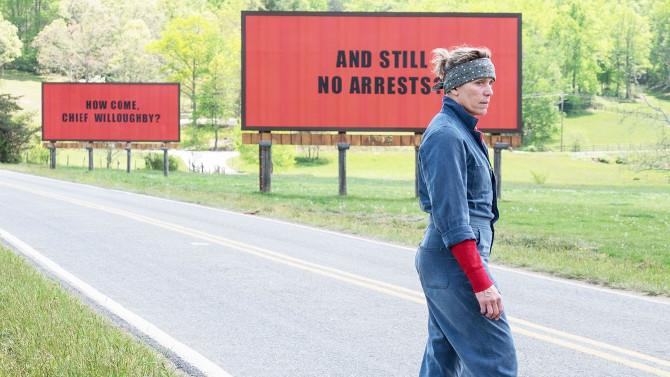
Advertising Gets Results?
Three Billboards Outside Ebbing, MissouriFebruary 20, 2018Good things come in threes – case in point, Martin McDonagh’s Three Billboards Outside Ebbing, Missouri. His third full length feature, it has earned him his first Best Picture nomination at the Academy Awards (expected to be one of the frontrunners this year), while the motion picture has also garnered its three main performers Best Actress/Supporting Actor nods, and, though it may be a tad of a stretch, when eliminating the four above mentioned Oscar nominations, it has also earned three other chances for the elusive statuette (for Original Score – Carter’s Burwell’s composition brimming with mysterious western melancholy; Original Screenplay; and Film Editing). Interestingly, the film could very well have had another title, “Three Letters from a Sheriff in Ebbing, Missouri” – but more on that later. Bringing to life another fascinating dark premise, McDonagh scribes a heart-wrenching tale of how human beings deal with anger, loss, hate, guilt, grief, injustice, and the seemingly cruel fate of life, yet, as always, combined with his sharp wit – a rare movie that, despite its pitch black subject matter, will have you laughing on and off throughout, much like his earlier gems, 2008's In Bruges and 2012's Seven Psychopaths.
-

Stir Crazy
Get OutFebruary 11, 2018A rare horror movie to be nominated for Best Picture at the Academy Awards, 2017's Get Out, written and directed by Jordan Peele, fuses its slow-burner tale with creepy atmosphere, relevant social commentary and touches of comedy, making it so much more than just a straight-forward horror flick. With a story somewhat reminiscent of The Stepford Wives, protagonist Chris Washington (Daniel Kaluuya – an Oscar nominated performance) is an up and coming photographer, an African American twenty-something living a fulfilling life in the big city. In a loving relationship with Rose Armitage (Allison Williams) for the past five months, she has decided to bring him home to meet the folks – a weekend trip that is not exactly the most enticing scenario for the man.
-
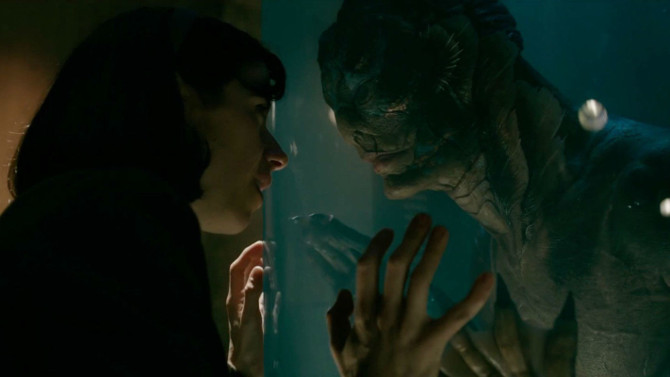
Water Feature
The Shape of WaterFebruary 9, 2018There is a scene in 1954's Creature from the Black Lagoon where the female lead, played by Julie Adams, swims through the water. Shot from both above and below, there is a loving elegance to the camera work, and, in a few of the underwater moments, the lighting almost makes it seem as if she is swimming in the nude. Eventually, the Creature appears, and what develops can be looked at in two lights. . . one – that he is stalking her, murder in the monster’s every fibre; two – his movements, mirroring hers, are almost like a sensuous dance, a love-match for the long secluded and lonely Creature. This year’s Academy Award Best Picture contender, The Shape of Water, accepts the second perspective not followed in the Universal horror classic, developing a movie that very much could be its long lost alternate reality sequel. Written and directed by horror maestro Guillermo del Toro, he sews several threads together so that movie afficionados could almost believe that this is the case – perhaps most importantly that it is set only a few years after 1954 (a moment when xenophobic fears were running high with the Cold War at its most tense) and that the creature comes from the Amazon as well. . . while security expert Richard Strickland (Michael Shannon) makes it very clear that it was no easy feat transporting the powerful and mysterious amphibian back to America. Its look is also very much influenced by the horror classic.
